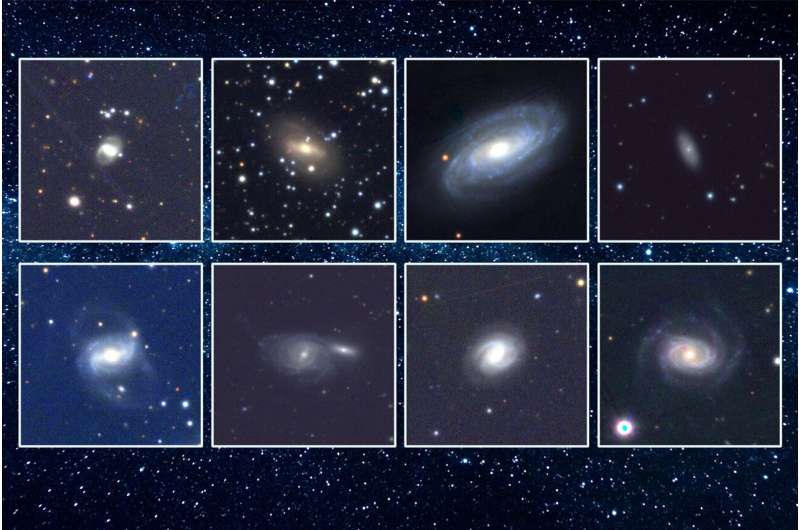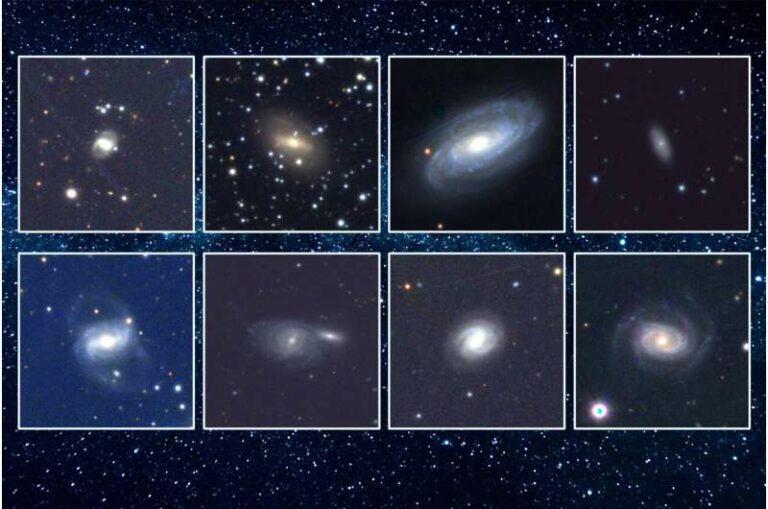Astronomers Detect 18 Black Holes Feeding on Stars in Proximity
A groundbreaking study conducted by scientists from MIT has revealed that star-shredding black holes are abundant in the sky, provided one knows where and how to search for them. Published in The Astrophysical Journal, the study unveils the discovery of 18 new instances of tidal disruption events (TDEs), which occur when a nearby star is gravitationally pulled into a black hole and torn apart. These events release an immense burst of energy across the electromagnetic spectrum as the black hole consumes the star.
Previous observations of TDEs have primarily focused on detecting characteristic bursts of light in the optical and X-ray bands. These searches have identified approximately twelve star-shredding events in the vicinity of our universe. However, the MIT research team has significantly expanded the catalog of known TDEs by more than doubling the number through their latest findings.
The team’s breakthrough came from their unconventional approach of examining the infrared band. In addition to emitting optical and X-ray bursts, TDEs can also generate infrared radiation, particularly in galaxies with abundant dust particles that surround a central black hole. This dust typically absorbs and obscures optical and X-ray light, making it challenging to detect any signs of TDEs in these bands. However, the dust also heats up during the process, producing detectable infrared radiation. Consequently, the team discovered that infrared emissions can serve as a reliable indicator of tidal disruption events.
By focusing on the infrared band, the MIT researchers successfully identified numerous hidden TDEs in galaxies where such events were previously undetectable. These 18 new events occurred in various types of galaxies, scattered across the celestial sphere.
Lead author Megan Masterson, a graduate student at MIT’s Kavli Institute for Astrophysics and Space Research, emphasizes that the majority of these sources do not manifest in the optical bands. To comprehensively understand TDEs and utilize them to investigate the demographics of supermassive black holes, it is imperative to explore the infrared band.
In conclusion, this groundbreaking study by MIT scientists has shed light on the prevalence of star-shredding black holes in the sky. Through their innovative use of the infrared band, the researchers have significantly expanded the catalog of known TDEs, providing valuable insights into the behavior and characteristics of these cosmic phenomena.Other MIT authors include Kishalay De, Christos Panagiotou, Anna-Christina Eilers, Danielle Frostig, and Robert Simcoe, and MIT assistant professor of physics Erin Kara, along with collaborators from multiple institutions including the Max Planck Institute for Extraterrestrial Physics in Germany.
Heat spike
The closest TDE yet has been recently detected by the team through their search in infrared observations. This discovery has paved the way for astronomers to explore actively feeding black holes using infrared-based methods.
Motivated by this initial detection, the group embarked on a search for more TDEs. In their latest study, the researchers delved into the archival observations captured by NEOWISE, which is the updated version of NASA’s Wide-field Infrared Survey Explorer. Launched in 2009, this satellite telescope has been diligently scanning the entire sky for transient bursts of infrared radiation.
To identify these bursts, the team utilized an algorithm developed by co-author Kishalay De, which identifies patterns in infrared emissions that indicate a transient event. They then cross-referenced these flagged transients with a catalog of nearby galaxies within a distance of 200 megaparsecs or 600 million light years. As a result, they discovered that infrared transients could be linked to approximately 1,000 galaxies.
Next, the team focused on analyzing the infrared bursts of each galaxy to determine if they originated from sources other than TDEs, such as active galactic nuclei or supernovae. After ruling out these possibilities, they scrutinized the remaining signals, searching for a distinct infrared pattern characteristic of a TDE. This pattern typically consists of a sharp spike followed by a gradual dip, indicating the heating and subsequent cooling of surrounding dust as a black hole tears apart a star.
Through this analysis, the researchers identified 18 “clean” signals of tidal disruption events. They then conducted a survey of the galaxies in which these TDEs occurred and observed their presence across a wide range of systems, including dusty galaxies, spanning the entire sky.
According to Masterson, if one were to gaze at the sky and observe numerous galaxies, the occurrence of TDEs would be representative across all of them. This challenges the previous belief that TDEs only transpire in a specific type of galaxy, solely based on optical and X-ray searches.
Edo Berger, an astronomy professor at Harvard University who was not part of the study, highlights the current ability to penetrate through dust and conduct a comprehensive census of nearby TDEs. He expresses enthusiasm regarding the potential of subsequent investigations utilizing extensive infrared surveys, eagerly anticipating the discoveries they will unveil.

A dusty solution
The team’s discoveries have contributed significantly to addressing several key questions in the field of tidal disruption events. Previously, astronomers had primarily observed TDEs in a specific type of galaxy known as a “post-starburst” system. These galaxies were once active in star formation but have since become inactive. However, this galaxy type is quite rare, which puzzled astronomers as to why TDEs appeared to occur predominantly in these less common systems. Interestingly, these post-starburst systems also tend to have less dust, which makes it easier to detect the optical or X-ray emissions from a TDE.
However, by utilizing the infrared band, astronomers have now expanded their ability to observe TDEs in a wider range of galaxies. The team’s recent findings demonstrate that black holes can consume stars in various types of galaxies, not just post-starburst systems.
Furthermore, these discoveries have also provided an explanation for a previously perplexing issue known as the “missing energy” problem. Physicists had predicted that TDEs should emit more energy than what had actually been observed. However, the MIT team suggests that dust may account for this discrepancy. They have discovered that if a TDE occurs in a galaxy with a significant amount of dust, the dust itself can absorb not only optical and X-ray emissions but also extreme ultraviolet radiation, effectively compensating for the presumed “missing energy.”
The 18 recent discoveries have also contributed to astronomers’ ability to estimate the frequency of tidal disruption events (TDEs) in a specific galaxy. By incorporating these new TDEs with previous findings, scientists have determined that a galaxy experiences a TDE approximately once every 50,000 years. This estimation aligns more closely with the theoretical predictions made by physicists. Through further infrared observations, the research team aims to further elucidate the occurrence rate of TDEs and gain a deeper understanding of the characteristics of the black holes that drive them.
According to Kara, “Previously, people proposed highly unconventional explanations for these enigmatic phenomena. However, we have now reached a stage where we can successfully resolve all of these mysteries. This newfound confidence suggests that we do not require such exotic physics to account for our observations. Additionally, we have gained a better understanding of the underlying mechanisms involved in the disintegration and consumption of stars by black holes. Our comprehension of these systems has significantly improved.”
This article is republished from PhysORG under a Creative Commons license. Read the original article.
Do not forget to share your opinion with us to provide you with the best posts !




0 Comments